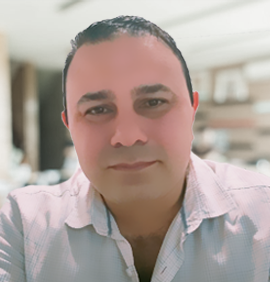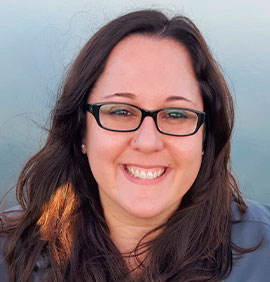 Universidade Federal do Pará
Universidade Federal do ParáLicenciado em Química (2002), Mestre em Química Orgânica (2006) e Doutor em Físico-Química pela Universidade Federal do Pará (2011). Professor Associado 1, desde 2011 é do quadro do Instituto de Ciências Biológicas da Universidade Federal do Pará, onde foi Diretor da Faculdade de Biotecnologia entre 2016 e 2017. Desde a inauguração do Parque de Ciência e Tecnologia do Guamá, em julho de 2016, é vice-coordenador do Laboratório de Óleos da Amazônia, onde se dedica às atividades de pesquisa e prestação de serviços, nas quais atende desde grandes empresas como Agropalma, Natura, Beraca, Amazon Oil e DendeTauá até cooperativas e associações de agricultores familiares. Atua nas áreas de Biocombustíveis e Biomassas Residuais, valorização de resíduos, preparação de catalisadores, além de estudos com óleos e gorduras vegetais e de cianobactérias. Coordena atualmente 2 projetos de pesquisa, entre eles o projeto "DESENVOLVIMENTO DE NOVOS CATALISADORES E PROCESSOS SUSTENTÁVEIS PARA BIORREFINARIA UTILIZANDO REJEITOS AGROINDUSTRIAIS LIGNOCELULÓSICOS AMAZÔNICOS", um dos 15 selecionados (entre 664 propostos) em edital pelo Banco da Amazônia em 2018. Está vinculado aos Programas de Pós-Graduação em Química (PPGQ) e Biotecnologia (PPGBIOTEC). Já co-orientou duas Teses de Doutorado e uma dissertação de mestrado. Além disso, já orientou 3 Teses de Doutorado, 11 dissertações de mestrado e 30 TCCs. Atualmente orienta 4 TCCs, 4 mestrados e 4 doutorados. Tem experiência na área de Química, com ênfase em Cinética Química e Catálise, Química de Produtos Naturais, Oleoquímica e Físico-Química Inorgânica. É membro da Sociedade Brasileira de Química e da Sociedade Brasileira de Catálise.
 Clemson University
Clemson UniversityDr. Ana C. Alba-Rubio is an associate professor in the Department of Chemical & Biomolecular Engineering at Clemson University. She received her B.S. in chemical engineering from the University of Malaga, Spain, in 2007. She then moved to the Institute of Catalysis and Petrochemistry (CSIC) in Madrid, Spain, to pursue her doctoral studies under the supervision of Dr. Manuel López Granados. As a doctoral student, she enjoyed two research stays in Brazil and the Netherlands. After receiving her Ph.D., Dr. Alba-Rubio joined the Department of Chemical and Biological Engineering at the University of Wisconsin-Madison to conduct postdoctoral research with Prof. James Dumesic and Prof. Manos Mavrikakis.
She focused on the controlled synthesis of metal, bimetallic, and bifunctional catalysts for reactions of interest in biomass conversion and the direct synthesis of H2O2. In 2015, she joined the faculty at the University of Toledo, and she recently moved to Clemson University as an associate professor. Her current research interests involve the rational design and synthesis of heterogeneous catalysts to provide fuels and materials sustainably and the development of nanomaterials for sensing applications. Dr. Alba-Rubio holds a CAREER Award from the National Science Foundation studying the development of dual-function materials for CO2 capture and conversion, the 2019 UToledo College of Engineering Excellence in Supervision of Undergraduate Research Award, and the 2018 UToledo Outstanding Scholarly and Creative Activity Award. She was also named to the 2020 Class of Influential Researchers by the Industrial & Engineering Chemistry Research journal and recognized as one of the 2021 Nanoscale Emerging Investigators. She currently serves as a director of the AIChE Catalysis and Reaction Engineering Division (CRE).
Resumo: Homogeneous and heterogeneous catalysis are fields that have been historically separated. Poly(styrenesulfonic acid) (PSSA) combines the advantages of both homogeneous and heterogeneous catalysis. PSSA is soluble in polar solvents; therefore, all acidic groups are readily accessible. In addition, the catalyst cannot be deactivated through coking because there is no surface for the carbonaceous species to be deposited. At the same time, PSSA, due to its high molecular weight, can be easily recovered by ultrafiltration for further utilization. PSSA has shown promising activity in reactions that require Brønsted acid sites, such as the hydrolysis of PET, dehydration of xylose to furfural, or biodiesel production from vegetable oils. We have recently added a second functionality to this polymer catalyst by the incorporation of AlCl3, and this led to a soluble and reusable catalyst with both Brønsted and Lewis acid sites (PSSA-AlCl3). This superacid catalyst was able to catalyze all the reactions involved in the one-pot synthesis of hydroxymethylfurfural (HMF) from glucose and directly from starch. HMF is a valuable platform chemical, and there is an enormous market for some of its derivatives, such as furandicarboxylic acid (FDCA) and adipic acid. This talk will also address the synthesis of inverse metal oxide-metal catalysts for the hydrogenation of CO2 and the addition of a sorbent component for the development of dual-function materials (CO2 capture & conversion). This one-pot approach could eliminate current energy-intensive and corrosive CO2 capture and storage processes while producing important commodity chemicals and fuels.
